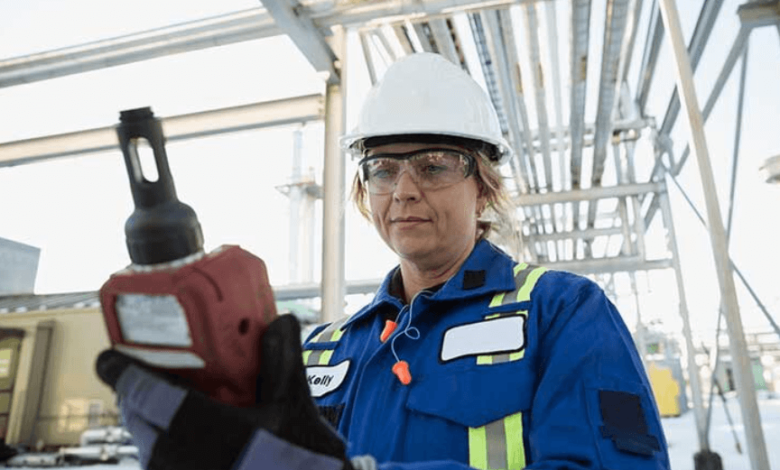Enhancing Safety and Compliance: The Role of Risk Register Software and Silica Dust Air Monitoring in Australian Workplaces

In Australia, worker health and safety are crucial areas of focus, especially in high-risk sectors like construction, mining, and manufacturing. One such risk is exposure to silica dust which is linked to chronic respiratory diseases like silicosis. More and more, businesses face the challenge of managing emerging risks as there is no stopping industrial evolution. Thankfully, Australian businesses now have access to compliant risk register software alongside advanced monitoring technologies—such as air monitoring for silica dust—that are transforming industry approaches to health and safety compliance. In this blog we discuss how these two tools can help achieve compliance while increasing worker safety and productivity.
1. The Growing Threat of Silica Dust in Australian Workplaces
Silica dust is a substance with great potential for hazard that exists within several industries particularly those concerned with mining operations, construction work, and processing stone activities. Durable workers exposed excessively to hazardous silica dust concentrations are likely to suffer from disabling respiratory diseases such as COPD, lung cancer as well as silicosis (a lethal condition). There has been increased recognition given to the fact that silica dust poses serious dangers at workplaces; hence Australian companies must endeavor to employ controls for monitoring and mitigating exposure levels. Addressing compliance requirements is often straightforward. However, ensuring monitoring and exposure tracking, as well as taking timely actions to protect workers, presents unique challenges. Here is where the combination of risk register software with silica dust air monitoring technology comes in handy in reducing risks, improving safety measures, and aiding compliance with Safe Work Australia regulations and national workplace health and safety standards.
2. Improving Efficiency In Risk Management with Risk Register Software
For any company looking to manage workplace risks effectively, risk register software is a must-have. This type of software enables companies to capture identify evaluate and monitor different risks such as health hazards like exposure to silica dust. For Australian firms, the software assists not only in capturing risk data but also prioritizing actions relative to their severity and likelihood.
With the inclusion of silica dust monitoring onto the risk register software, businesses can streamline all relevant information into one system. This integration helps ensure that processes are stagnant while real time updates are happening throughout the system continuously. Moreover, businesses can better track changes to exposure levels over time and identify trends for quick reaction necessary changes during shifting conditions.
See also: Smart Tips to Make the Most of Your Draper Lift Without Calling Tech Support Every Month
3. Real-Time Tracking with Silica Dust Air Monitoring Systems
Even though risk register software helps businesses keep track of possible risks, collecting data in real time poses greater challenges, especially for workplaces where the presence of silica dust is an ongoing hazard. Breathing Silica dust air monitoring systems offers continuous exposure measurement at an airborne silica level so that businesses are able to monitor and take action when necessary.
In Australia, such alarm systems are indispensable for industries like mining, construction, and demolition which are considered hazardous. By using real-time monitors, businesses can reduce their responsibility ensuring safe exposure to harmful dust levels and controlling air ventilation as well as employing PPE (personal protective equipment) when dangerous exposure takes place.
Combining silica dust air monitoring with risk register software allows businesses to maintain accurate static records with a live feed of exposure levels checking against thresholds for critical limits ensuring all data is captured and analyzed. Enhanced safety and compliance coupled with automatic regulatory reporting greatly simplifies business processes while covering short-term and long-term risk management objectives.
4. How Combining Data Enables More Effective Risk Management
The integration of risk register software with silica dust air monitoring systems exemplifies a more comprehensive approach to risk management. Companies can now consolidate all risk data, both environmental as well as health-related, on one platform instead of using disjointed systems or manual data entry. This is advantageous for Australian businesses because it aids in risk identification and prioritization.
As an illustration, the air monitoring system provides real time alerts when silica dust concentration surpasses designated thresholds. Such information is automatically entered into the risks register which initiates reaction plans that could include adjusting SOPs, issuing PPE, training staff, among others. Businesses do not need to monitor every step of the process, allowing automated workflows like this helps ensure swift and appropriate action is taken.
5. Strengthen Adherence to Australian Health and Safety Instructions
Australia maintains rigorous and constantly changing workplace health and safety guidelines focusing on dangerous goods such as silica dust. These policies require effective risk management systems to mitigate potential legal or financial inquiries outside compliance gaps due to business negligence abuse on violation claims.
By implementing a risk register software and silica dust air monitoring systems, companies in Australia can meet Safe Work Australia requirements and prove due diligence with obligations related to worker health and safety. Using a risk register, records detailing exposure mitigation actions are kept as required while the silica dust air monitoring systems offer proof that acceptable limits of exposure are maintained.
Moreover, businesses can ensure active risk management, proving during audits or inspections that comprehensive tracking for health risks associated with silica dust is monitored.
6. Enhancing Edges in Worker Safety Concerns and Exposure Prevention
Real-time reporting sharpened together with centralizing data leads to improved protection of workers from long-term health conditions associated with silica dust. The provision of continuous ongoing monitoring coupled with condensed risk data equips businesses to enhance protective measures directed towards their employees’ occupational health and safety through the use of risk register software and silica dust air monitoring.
In Australia, where the construction and mining sectors are key to the economy, protecting employees from potential health hazards is critical. Integrated air quality monitoring with risk management allows businesses to better control ventilation, PPE, and overall safety procedures within a given worksite. This not only minimizes the chance of workers developing health complications but also promotes a sense of safety culture among the workforce.
7. Using Innovations to Promote Safety Workplace Culture
Australia’s business environment is increasingly adopting new innovations to improve workplace safety. Businesses can now automate their silica dust monitoring with risk register software for enhanced workplace safety. Integrating this technology helps ensure that all health risks are constantly being monitored, managed, and mitigated in real-time.
There is also a protective appeal that these tools offer when used by companies as they refocuses on employee priority systems. This participative approach promotes positive perceptions within the workplace which enhances job satisfaction while reducing turnover rates.
Conclusion
The use of risk register software alongside silica dust air monitoring in Australia is a potent safeguard for workplace safety. With this technology, organizations can guarantee compliance and mitigate health hazards while safeguarding the wellbeing of their employees. Real-time information collection paired with multi-layered risk assessment puts Australian companies in a position to protect their workers while remaining compliant with emerging regulatory challenges. These technologies are poised to play an even more critical role as businesses strive to minimize workplace risks and comply with growing demands for safer, sustainable work environments.





